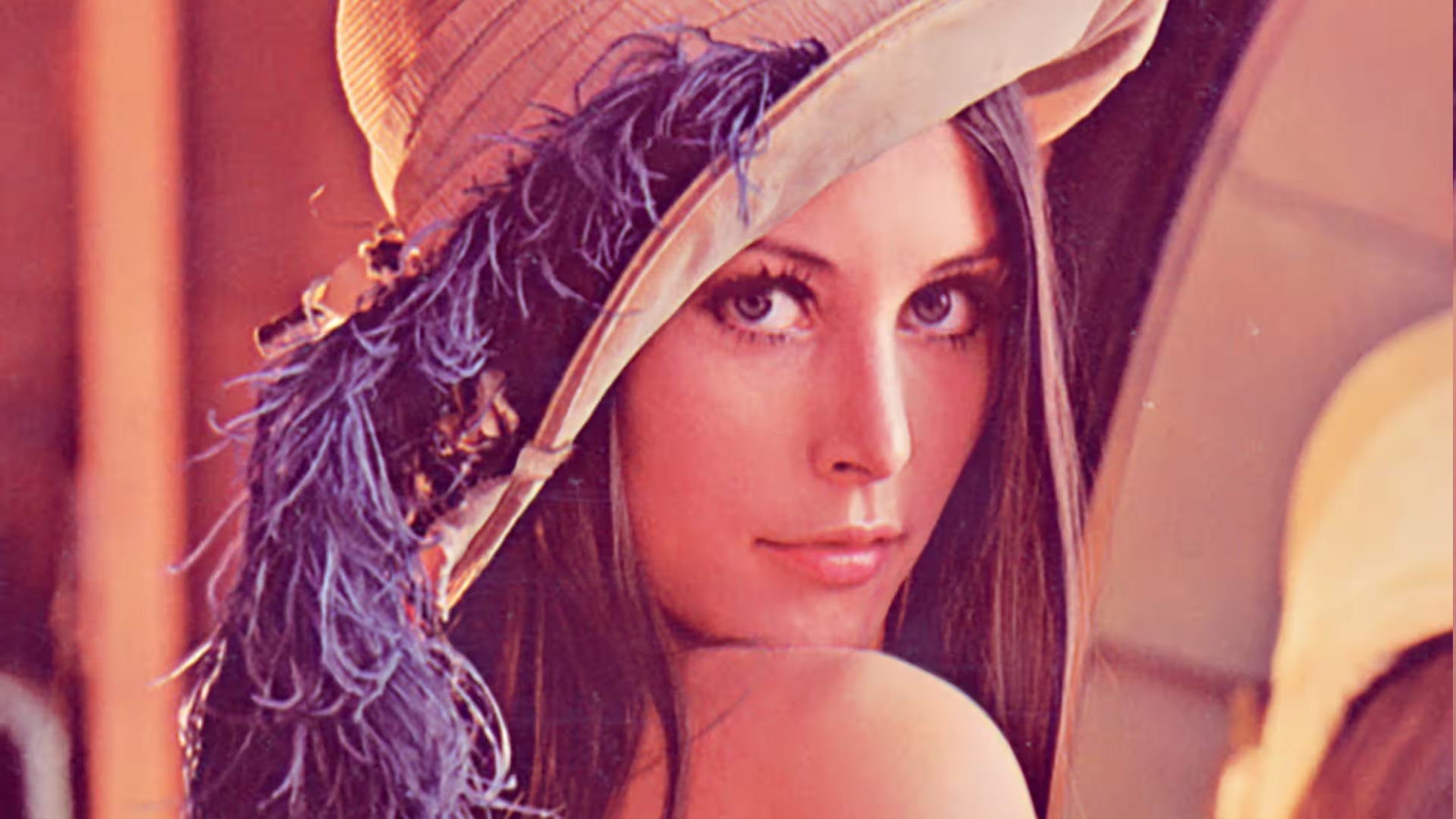
As of April 2024, the IEEE (The Institute of Electrical and Electronics Engineers) has let it be known they'll no longer accept research papers with the iconic image of Lena – which is actually a crop of a Playboy centrefold from 1972.
Why should an early 70s Playboy image be an issue for "The trusted voice for engineering, computing, and technology around the globe" in 2024? Because the image – which in its full form was rather more revealing – was scanned at University of Southern California’s (USC) Signal and Image Processing Institute.
There, in early 1973, Alexander Sawchuk and his team happened to have a several-month-old copy of Playboy and were looking for a picture with a complex mix of colours and textures to test the technology they were developing – a technology we now know as JPEG.
Perhaps fortuitously, their 512-line scan of the Lena image was only the top 5 inches of the glossy centrefold. The reference image continued to be used by computer researchers – copies were even handed out by the USC to lab visitors. The image started to become known as "The Lenna" (note the misspelling of the name), and developed a mystique among software engineers as part of internet history. JPEG, after all, is what brought photographic images to the web.
By the 90s, though, the world of tech was less male-dominated and the inherent sexism, and a message began to creep through. David C. Munson Jr., now president of the Rochester Institute of Technology, is recorded as raising the issue in the IEEE Transactions on Image Processing.
Playboy Enterprises, of course, could have put a stop to it by enforcing its copyright, but chose not to. It got as far as threatening an academic journal in 1992, but chose to let it be because "It is a phenomenon.”
Lena did some other modelling work – used for the calibrating of color film for Kodak and appearing on Xerox catalogs. (In terms of sexism or simple dehumanisation in the industry, Kodak's calibration models, all beautiful women, were called "Shirleys" after the first model, Shirley Page). Eventually, Lena returned to her native Sweden, save for an appearance at an imaging conference in Quebec in 2015.
That, though, gave Wired a source to track her down and re-created the pose with Lena as she was then, 47 years older. This image was part of a feature in which the tech mag took a deep dive into the issues raised by the image.
Lena told Wired she was proud of the image, though didn't fully appreciate the significance. Soon after a documentary, Losing Lena, was made and she was quoted on its release with a new view: "I retired from modelling a long time ago,” Forsén said, “It’s time I retired from tech, too. We can make a simple change today that creates a lasting change for tomorrow. Let’s commit to losing me."
Nearly a decade later, the IEEE's publishing board has passed a motion that bans submissions with the image: "IEEE’s diversity statement and supporting policies such as the IEEE code of ethics speak to IEEE’s commitment to promoting an inclusive and equitable culture that welcomes all. In alignment with this culture and with respect to the wishes of the subject of the image, Lena Forsén, IEEE will no longer accept submitted papers which include the ‘Lena image’."
It's also, in truth, a good thing from a technical standpoint – by modern standards much greater dynamic range is needed than a 1970s scan in image tests, as academics have been saying for some time (Wirth & Nikitenko, 2011)
See our guide to the best scanner for documents and photos and the best film scanner.







